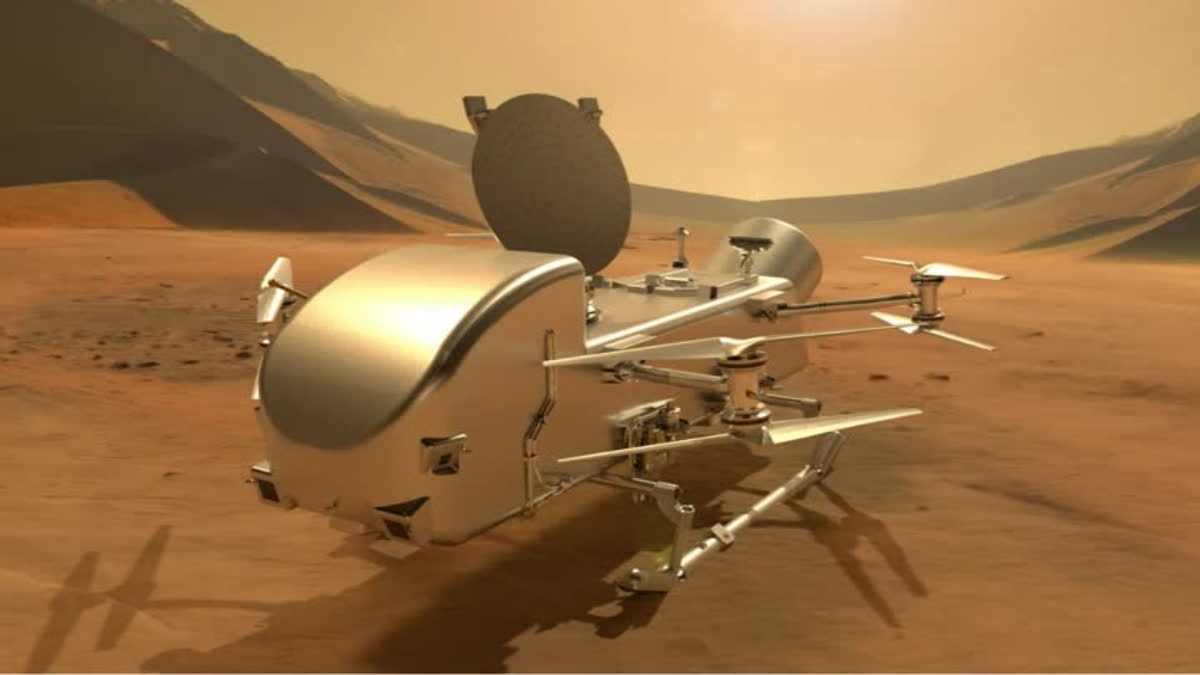Washington: NASA is building a nuclear-powered lander for exploring Titan -- Saturn’s largest moon having a dense atmosphere and low gravity. Titan is a major target in NASA’s quest to assess habitability and search for potential signs of life beyond Earth on worlds across the solar system.
The lander, Dragonfly rotorcraft, is NASA’s only mission to the surface of another ocean world. Titan is also thought to have a subsurface ocean of water. The car-sized drone, built and operated by Johns Hopkins Applied Physics Laboratory (APL) in Maryland, will have four pairs of coaxial rotors (meaning one rotor is stacked above the other) and will slice through Titan’s dense, nitrogen-rich atmosphere.
It will be equipped with cameras, sensors and samplers to help examine swaths of Titan known to contain organic materials that may have come in contact with liquid water beneath the organic-rich, icy surface. Dragonfly’s flight systems has so far undergone four testing in the past three years at NASA’s Langley Research Center in Virginia.
“We tested conditions across the expected flight envelope at a variety of wind speeds, rotor speeds, and flight angles to assess the aerodynamic performance of the vehicle,” said Ken Hibbard, Dragonfly mission systems engineer at APL, in a blogpost.
